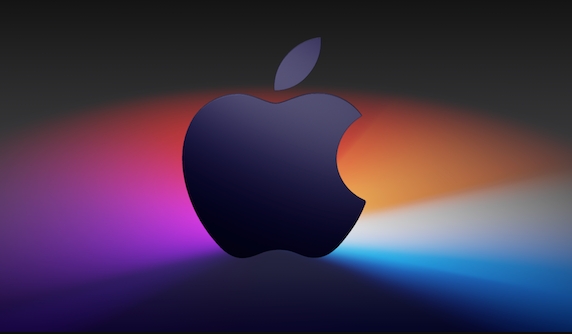How to back up my Mac before a macOS update?
Before updating macOS, you should back up your Mac. 1. Use Time Machine to make a complete backup, insert an external hard drive and enable automatic regular backup; 2. Manually back up important files to cloud storage or external devices, and prioritize backup of key information such as documents, photos, bookmarks, etc.; 3. Create a bootable macOS installation disk for system repair or reinstallation, prepare a 16GB USB drive and run terminal commands to create. Backup can effectively prevent update failure or data loss, and it is more secure to prepare in advance.

Backing up your Mac before updating macOS is indeed a good habit, especially when upgrading large versions. Although system updates are usually stable, there will be problems occasionally, such as failure of updates, incompatible drivers, or unexpected data loss. Make backups in advance to allow you to recover quickly when you encounter problems.

Below are some practical and reliable backup methods that are suitable for most users.

Backup with Time Machine is the easiest way
Time Machine is a backup tool that comes with macOS. It is very convenient to use and only requires an external hard drive to handle it.
- Insert an external hard drive that is large enough (preferably a dedicated backup disk)
- Open System Settings > General > Time Machine and select your backup disk
- After turning on backup, it will automatically save all content on your computer regularly
The first backup may take some time, depending on how much of your files are. The subsequent backup will only record the changed parts, which will be much faster.

If you are not sure which backup method to choose, use Time Machine to do a complete backup first , which is the safest basic operation.
You can also manually back up important files to the cloud or other devices
Not everyone is used to using Time Machine, or you only want to back up some key information, such as documents, photos, and download directories.
You can consider this at this time:
- Copy files to cloud storage services such as iCloud Drive, Google Drive, or Dropbox
- Manually copy with external hard drive or USB drive
- Use NAS or LAN shared devices to do off-site backup
It is recommended to prioritize the backup of the following types of content:
- Working documents and project files
- Browser bookmarks and passwords
- Email account configuration and local archive
- Common files in desktop and download folders
This method is flexible and suitable for users who do not want to back up the entire system, and also for laptop users to make a temporary backup.
Don't forget to create a bootable macOS installation disk (optional but recommended)
In case of serious problems during the update process that causes the system to fail to start, you can use this installation disk to repair or reinstall the system.
The steps are as follows:
- Prepare a USB drive of at least 16GB
- Download the corresponding version of macOS installer in the App Store (the same version you want to update)
- Open the terminal and enter the command to create a bootable disk (the format is similar to:
sudo /Applications/Install\ macOS\ XXX.app/Contents/Resources/createinstallmedia --volume /Volumes/MyVolume)
After the creation is completed, the USB flash drive will come in handy at critical moments.
Basically that's it. Backups are not complicated, but they are easily overlooked. Take some time in advance to prepare and be more at ease when updating.
The above is the detailed content of How to back up my Mac before a macOS update?. For more information, please follow other related articles on the PHP Chinese website!

Hot AI Tools

Undress AI Tool
Undress images for free

Undresser.AI Undress
AI-powered app for creating realistic nude photos

AI Clothes Remover
Online AI tool for removing clothes from photos.

Clothoff.io
AI clothes remover

Video Face Swap
Swap faces in any video effortlessly with our completely free AI face swap tool!

Hot Article

Hot Tools

Notepad++7.3.1
Easy-to-use and free code editor

SublimeText3 Chinese version
Chinese version, very easy to use

Zend Studio 13.0.1
Powerful PHP integrated development environment

Dreamweaver CS6
Visual web development tools

SublimeText3 Mac version
God-level code editing software (SublimeText3)

Hot Topics
 Where is the pycharm interpreter?
May 23, 2025 pm 10:09 PM
Where is the pycharm interpreter?
May 23, 2025 pm 10:09 PM
Setting the location of the interpreter in PyCharm can be achieved through the following steps: 1. Open PyCharm, click the "File" menu, and select "Settings" or "Preferences". 2. Find and click "Project:[Your Project Name]" and select "PythonInterpreter". 3. Click "AddInterpreter", select "SystemInterpreter", browse to the Python installation directory, select the Python executable file, and click "OK". When setting up the interpreter, you need to pay attention to path correctness, version compatibility and the use of the virtual environment to ensure the smooth operation of the project.
 The difference between programming in Java and other languages Analysis of the advantages of cross-platform features of Java
May 20, 2025 pm 08:21 PM
The difference between programming in Java and other languages Analysis of the advantages of cross-platform features of Java
May 20, 2025 pm 08:21 PM
The main difference between Java and other programming languages is its cross-platform feature of "writing at once, running everywhere". 1. The syntax of Java is close to C, but it removes pointer operations that are prone to errors, making it suitable for large enterprise applications. 2. Compared with Python, Java has more advantages in performance and large-scale data processing. The cross-platform advantage of Java stems from the Java virtual machine (JVM), which can run the same bytecode on different platforms, simplifying development and deployment, but be careful to avoid using platform-specific APIs to maintain cross-platformity.
 Commands and configurations for starting Apache service in macOS system
May 16, 2025 pm 10:00 PM
Commands and configurations for starting Apache service in macOS system
May 16, 2025 pm 10:00 PM
The command to start the Apache service on macOS is sudoapachectlstart, and the configuration file is located in /etc/apache2/. The main steps include: 1. Edit the httpd.conf file, modify the Listen port such as Listen8080; 2. Adjust the DocumentRoot path to the personal directory such as /Users/your_username/Sites, and update the corresponding permission settings; 3. Use the sudoapachectlgraceful command to restart Apache to ensure that the configuration takes effect; 4. Enable the mod_deflate module to compress data to improve page loading speed.
 How to stop Microsoft Edge automatic updates
May 21, 2025 am 10:12 AM
How to stop Microsoft Edge automatic updates
May 21, 2025 am 10:12 AM
How to stop Microsoft Edge Automatically Update Microsoft Edge is the default browser that comes with Windows 11. Earlier, the Edge browser received updates as the Windows operating system was updated. However, the Edge browser based on Chromium has changed that. The browser will now automatically update in the background without your knowledge. In this article, we will explain how to stop automatic Microsoft Edge updates in Windows 11 and macOS. Related: How to disable automatic updates in Google Chrome? Check for automatic edge updates Chromium-based Edge vs. Goo based on Chromium backend code
 MySQL installation tutorial teach you step by step the detailed steps for installing and configuration of mySQL step by step
May 23, 2025 am 06:09 AM
MySQL installation tutorial teach you step by step the detailed steps for installing and configuration of mySQL step by step
May 23, 2025 am 06:09 AM
The installation and configuration of MySQL can be completed through the following steps: 1. Download the installation package suitable for the operating system from the official website. 2. Run the installer, select the "Developer Default" option and set the root user password. 3. After installation, configure environment variables to ensure that the bin directory of MySQL is in PATH. 4. When creating a user, follow the principle of minimum permissions and set a strong password. 5. Adjust the innodb_buffer_pool_size and max_connections parameters when optimizing performance. 6. Back up the database regularly and optimize query statements to improve performance.
 Which is better, uc browser or qq browser? In-depth comparison and evaluation of uc and qq browsers
May 22, 2025 pm 08:33 PM
Which is better, uc browser or qq browser? In-depth comparison and evaluation of uc and qq browsers
May 22, 2025 pm 08:33 PM
Choosing UC browser or QQ browser depends on your needs: 1. UC browser is suitable for users who pursue fast loading and rich entertainment functions; 2. QQ browser is suitable for users who need stability and seamless connection with Tencent products.
 How to update the system's own software
May 19, 2025 pm 06:48 PM
How to update the system's own software
May 19, 2025 pm 06:48 PM
Updating the software that comes with macOS is simple and important because it can fix bugs, improve performance, bring new features and security improvements. You can update through the "Software Update" option in "System Settings" or "System Preferences" and follow the prompts. If you encounter problems, try restarting your Mac or checking your network connection, and the Apple Support page also provides a solution. It is recommended to keep the system up to date, back up data before update, and ensure Wi-Fi and sufficient storage space. Update details can be viewed on Apple's official website.
 How to adjust screen brightness on macOS
May 16, 2025 pm 08:39 PM
How to adjust screen brightness on macOS
May 16, 2025 pm 08:39 PM
Adjusting screen brightness on macOS can be fine-tuned using the brightness adjustment keys on the keyboard or through system preferences. 1. Press the Sun icon keys on the F1 and F2 keys to quickly adjust the brightness. 2. Drag the slider in the "Display" option in "System Preferences" to make minor adjustments. 3. Enable the "Auto-adjust brightness" function to make the brightness change with the ambient light. 4. Use the "Night View" mode to reduce blue light to protect your eyes. 5. Developers can use AppleScript to automate brightness adjustments.







